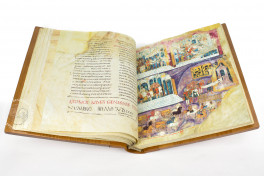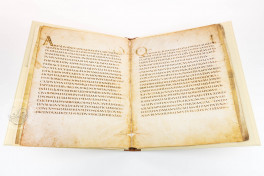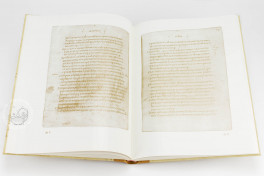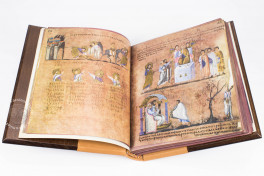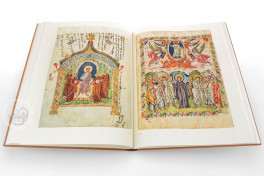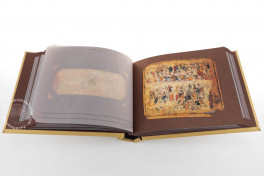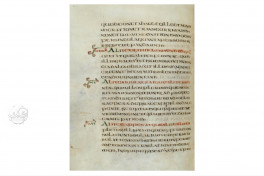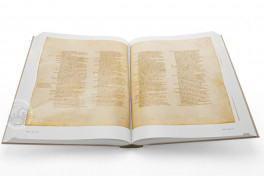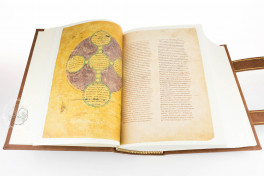Late Antiquity is commonly referred to by scholars as the period between the golden age of Roman history and the beginning of the Middle Ages proper. As with many other forms of art, during the Late Antique era manuscript illumination was at the first stages of its development. The form of books itself was still evolving, as the scroll (volumen) used in ancient Greece and Rome gradually made way for the codex as we know it.
Late Antique illumination is thus found in diverse forms of books - papyrus or parchment rolls made by pasting together long strips of writing material, but also in codices, where folia of vellum are bound as in modern-day books.
The style of Late Antique miniatures is extremely simple yet deeply evocative. Their inspiration comes from Hellenistic art and recalls mural paintings found in the likes of Pompei. The themes found in Late Antique illumination are chiefly naturalistic, with characters often depicted in outdoor environments: depictions of scene from Virgil and Biblical episodes alike display a subtle array of pastel-like colors.
Late Antique miniatures are often found in half-page sized vignettes. Many of them are extremely detailed, and manuscripts dating back to this period are extremely striking objects. They were certainly an object for few to own, and especially purple-dyed copies undoubtedly represented a gift for princes.

